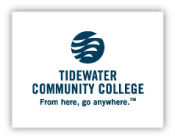
Although this interview was conducted before the recent tragedy in Oregon, this is great example of a community college working hard to improve student safety and prevention efforts ongoing. Rick spoke with George Okaty, Safety and Security Manager of Tidewater Community College. Okaty is a true leader who is dedicated to helping his staff become more efficient and keeping their campus safe.
Tidewater Community College is using Awareity’s TIPS platform to provide all security officers a secure way to submit and keep track of all safety incidents on campus. The college will also be expanding use of the platform in the next few months to allow their CSA’s (Campus Security Authorities), as well as students in the future, to report concerning behaviors and suspicious incidents. We are excited to see how they grow the platform on campus and to be a part of their leading efforts!
Below is a quick excerpt from the interview. To listen to the full conversation, click here!
Why did Tidewater CC implement TIPS? What types of pains and challenges are you hoping to eliminate by using an online platform?
Tidewater Community College was using Awareity’s MOAT/Vault platform for training. When we learned that the TIPS platform was available for our third-party security officers, we wanted to use this as well. We had issues managing 7 different locations, and we found that this (TIPS) would be helpful for us to use for our security platform, with better accuracy and ability to track all incident reporting efforts. This has really worked for us and we are more organized now because of it.
How has TIPS helped TCC’s security staff streamline and automate investigation and intervention efforts?
We had problems with going back and looking at past (incident) reports. With paper documents, it was hard to put things together. Being able to go back with TIPS, on an online system, we are able to go back further and tie reports to different locations throughout our campus. If we have a student suspended, we need to be able to go back and see this in a timely manner by scanning their ID and knowing right away. We need to get this information out quickly to other campuses as well. It gives us the ability to identify persons on our watch list and connect incidents with specific people. Bringing information together really helps our campus.
We continuously read and hear in the news about organizations failing to connect the dots in regards to at-risk individuals…how is TIPS helping you to eliminate gaps across your campus locations and departments?
Being able to go back and follow up on incidents, and go back to a specific report and use it as resource makes things much easier for us. Using TIPS we don’t have to sort through multiple pieces of paper.
How do you plan to utilize TIPS in the future?
Our next step is to include our Campus Security Authorities (CSA’s). We also want to get in to combining other systems we have within the MOAT system. We plan to utilize the fundamental feature of the software program and document new procedures with our staff. Because TIPS has the ability to attach files we also want to tie this to other programs we have, like our maintenance referral programs. We want to follow up with our Deans to integrate our system with this as well.
Any other comments/lessons learned you would like to share regarding TIPS?
When using the TIPS software, you are in a partnership with the Awareity team. I would recommend it. No two reporting systems are alike, there are going to be unique processes, there are going to be unique reviews, and what I have to say is that the Awareity team is very organized, easy to work with and has worked with us in adjusting the step-by-step process with how review and edit what is going on. That active process is very important, we get feedback from people in the field telling us they would like to change this or edit this, and we are able to work with the Awareity team to make this possible. We just want to emphasize the responsiveness of the Awareity team to make these changes.